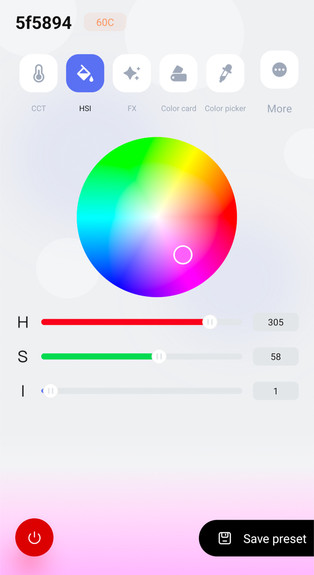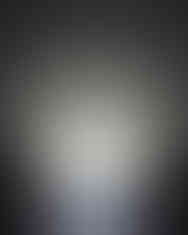COB Video Light Review: SmallRig RC 60C
- Stephen Knight
- Dec 7, 2024
- 11 min read
Updated: Oct 6
COB video lights have recently become small and light enough for portable use. The bi-color SmallRig RC 60B was one of the best portable COB video lights, and the new RC 60C builds on this with RGBCW output.
Disclaimer
The SmallRig RC 60C was purchased with my own funds. Product links are non-affiliate links.

Design and Construction
The SmallRig RC 60C is a cube shaped, portable RGBCW (Red, Green, Blue, Cool White, Warm White) COB video light that can be used with internal batteries, or alternatively with an external battery pack, or mains power via USB-C PD. It appears to be aimed at videographers and photographers who require high portability for "run and gun" or "on the fly" creating. It is also useful for content creators (such as YouTube and TikTok) who want a high quality, but affordable COB light for small studio or mobile setups. Continuous lighting is becoming more popular with portrait photographers instead of using flash/strobe units, as it is easier to visualise the light.
The RC 60C has 96+ CRI, 97+ TLCI white light output, which allows for a wide range of of correlated colour temperatures (CCTs) between 2,500K warm white to 10,000k very cool white. Improving upon the RC 60B, the RC 60C has red, green, blue, cool white, and warm white (RGBCW) emitters within the COB light unit..
The RC 60C light unit is slightly longer and heavier than the RC 60B at 700g , and has dimensions of 120 x 95 x 80mm. The shell is made from V-O flame retardant PC-ABS plastic, and some metal in the base. There is a 1/4"-20 thread in the base for tripod mounting. The unit uses a proprietary SmallRig S-mount for accessories, and thus doesn't use the Bowen or mini-Bowen mounts, the former being far larger than the light itself! It is available in two package option. The Powerbank Clamp Edition 4810 (US$199) includes a carrying handle/mini-tripod, carry bag, power bank clamp, mini reflector (45-Degree), USB-C Charging Cable (3m), USB-C PD Charging Cable (20cm), light stand adapter, instructions, handle, and protective cover. There is also a cheaper (US$179) Lite Edition 4808 package option which comes with the mini reflector, USB-C Charging Cable (3m), and instructions. I have previously purchased the GaN charger, mini-softbox, and silicone diffuser for the RC 60B.
Optional accessories that can also be purchased seperately include the RA-D30 mini Parabolic Softbox (US$39), GaN 100W Fast Charger (US$46), and Silicone Diffuser (US$13). The RA-D30 mini softbox weighs just 290g, and thus combined with the light unit is just 0.990kg. The RA-D30 opens up to 29cm in diameter, and folds down small enough to be easy to transport at just 25cm x 9cm.
The light unit has a 3400mAh 14.4V (48.96Wh) internal battery. This is a huge bonus as many sub-100W COB video lights lack an internal battery. The Wh rating allows it to be carried on Australian and USA domestic flights. This allows for claimed 45min runtime on Full mode, and 75min runtime on Eco mode (60% power).
The maximum charging power via USB-C is 48W/3A and maximum input power of 100W. A powerful 100W PD charger is required if you want fast (90 minute) charging times for the internal battery, or continuous power from the mains. An external PD powerbank or V-mount battery can be used to provide additional runtimes, but there is only USB-C input, and no D-Tap. There is also no V-lock connection on the chassis.
The unit contains a fan for cooling, which produced up to 26dB/1m, or 23dB/1m on Eco mode. This is essential for sustaining brightness, something that the vast majority of flashlights cannot do as they have to rapidly step down from the advertised brightness to avoid overheating.
There is no IPX rating, something that is a little bit disappointing for a portable light that will get used outdoors. The flashlight shaped Inkee GC30/60 is an alternative option if you need weatherproofing, but there is currently no RGB version. The RC 60C's cube shape is also a little bit awkward if you are using it like a flashlight, making the carrying handle rather useful if it is not mounted to a tripod. The handle does allow for light modifiers such as umbrellas to be attached.





User Interface
The SmallRig RC 60C has a fantastic user interface that is easy to use, and is summarised below:
Colour 1.3" IPS display.
On/off button (on back) - this only boots the software, a turn of the Brightness/effects knob is required to turn the light output on. This is to avoid accidental activation.
ECO button (on back) - toggles to/from ECO (60% mode) after a long press.
Mode button (below display) - cycles between CCT, HSI, FX, GEL, RGBCW modes (which affect the function of the SEL/ADJ knob.
INT rotary knob - used to adjust brightness in 1% steps, faster rotation 10% steps.. can be clicked for 20%/40%/60%/100% changes to brightness.
SEL/ADJ knob - function depends on the modes, but used to adjust CCT or G/M; Hue or Saturation; Effect mode, CCT, and frequency; Lee/Rosco, Gel type; and RGBCW settings.
Modifier release latch on top of light.
Effects are Papparazi, Television, Faulty Bulb, Lightning, Breathing, Flickering, Party, Flame, Fireworks, Police Car, Colour Cycle, CCT cycle.
Gels include Full to 1/8 CTB, CTO, and CTS.
Brightness range is 1% to 100%.
CCT range is 2500K to 10,000K.
Last mode memory.
Battery % remaining display.
SmallGoGo app control (Bluetooth Low Energy paired using Mode button) - also used for firmware updates.
Overall, I found the user interface easy to use, even without reading the instructions. The light requires a turn of the brightness/effects knob to turn on after turning on the on/off switch to activate. After that it is possible to dim to the light to 0% output for off without having to turn the light off. For more controlled light painting/night photography illumination you either need to to use the INT knob for on/off, or use the app where there is an instant on/off function. Unlike some flashlights there is no momentary on/off control.
The SmallGoGo app is easy to pair and use, and can be accessed in guest mode without having to give away your email and other personal details. I'm not sure why the app keeps asking for my location and photos/videos?
The Gel modes are pretty limited, and there is no Source mode for simulating different light sources. These are both features that Aputure do much better on their (considerably more expensive) lights.

SmallGoGo app screenshots.
Beam, Output, and Runtime
Optics Overview
The SmallRig RC 60C uses a 63W RGBCW (Red, Green, Blue, Cool White, Warm White) COB LED As well as RGB colour mixing, it has 96+ CRI, 97+ TLCI white light output, and allows for a wide range of of correlated colour temperatures (CCTs) between 2,500K warm white to 10,000k cool white. There are frosted optics, which results in the best colour mixing I have ever tested on a portable RGB light.
The RC 60C has quite a few beam shaping options including no reflector/open face with a 150 degree floody beam, reflector for a 45 degree beam (90 degree edge to edge) with diffuse hotspot, reflector with silicone diffuser (dome), mini softbox without diffuser material, mini softbox with diffuser material, and mini softbox with grid. It is also possible to use an umbrella with the handle,.
No PWM was detected on at any brightness level, and it is assumed to be using a constant current LED driver.
Runtimes
Runtimes were tested as:
Full - 44 mins, step-down from 100% to 80% at 35 mins.
Eco - 67 mins. Shorter than the 75min specification.
For anything other than quick photoshoots, it is likely that I would have to use Eco mode for adequate runtime. Thankfully, Eco mode is bright enough for most situations where portable lighting is required - see next section. The display shows approximate battery time remaining, which is very useful.
I hope that the RC 60C's battery capacity does not degrade as quickly as the battery in my RC 60B, for which SmallRig had to send me a replacement after 9 months.
Brightness (illuminance) and Beam Modifiers
Illuminance (lux/distance) is the best method for comparing the brightness of light sources for most photographic purposes. as it measures how bright an object, such as a portrait model is illuminated at a specified distance. Brightness (illuminance) testing used an Opple Light Meter 3 Pro at 2m, and converted to 1m using the inverse square law unless otherwise noted. All tests were performed using the internal battery.
SmallRig RC 60C 2500K Full, No Reflector - 3004 lux/1m.
SmallRig RC 60C 5600K Full, No Reflector - 3624 lux/1m.
SmallRig RC 60C 5600K Eco, No Reflector - 2192 lux/1m.
SmallRig RC 60C 5600K Full, Reflector - 9648 lux/1m.
SmallRig RC 60C 5600K Eco, Reflector - 5836 lux/1m.
SmallRig RC 60C 5600K Full, Reflector with silicone diffuser - 1568 lux/1m.
SmallRig RC 60C 5600K Eco, Reflector with silicone diffuser - 944 lux/1m.
SmallRig RC 60C 5600K Full, Mini Softbox with diffuser - 1212 lux/1m.
SmallRig RC 60C 5600K Eco, Mini Softbox with diffuser - 724 lux/1m.
Compared to:
SmallRig RC 60B 5600K Full, No Reflector - 3272 lux/1m.
SmallRig RC 60B 5600K Full, Reflector - 12440 lux/1m.
Olight Marauder Mini 5700K 6/7 flood mode @10mins - 13564 lux/1m.
SmallRig RF 10C 5600K 100% - 250 to 464 lux/1m.
Aputure MC Pro 5600K 100% - 535 lux/1m.
Lume Cube 2.0 5700K - 35 lux/1m (manufacturers spec - 140 lux/0.5m).
The results showed the following:
Despite the addition of RGB emitters on the COB LED, and slightly less lumens, I actually measured a 11% increase in illuminance for the RC 60C compared to the RC 60B at 5600K with no reflector. Maybe there is some beam focusing within the frosted optics?
Illuminance (no reflector) is approx. x2 brighter than the leading pocket RGBWW LED panel light (Amaran Ace 25C), and more than x6 brighter than the vast majority of pocket RGBWW LED panels.
There is a further x3 increase in illuminance when using the reflector compared to open face.
With the reflector, there was a 23% decrease in illuminance compared to the RC 60B at 9648 lux/1m. Intrigued, I compared the reflectors, and there is a subtle difference in design. The new reflector has an improved wide hotspot with softer edge.
Using the mini-softbox, even on ECO mode, the RC 60C is still brighter than most pocket RGBWW LED panel lights. The RC 60C will have a much softer light output for portraits. Your models with thank you for using a softbox!
RGB Brightness (Illuminance). My light meters do not work well with coloured light, so here is a comparison of a few class leading portable COB lights, RGB LED panel, and a RGB flashlights based on manufacturer specifications. Measurements lux/1m.
SmallRig RC 60C (no reflector) - Red 257, Green 1120, Blue 266 ( approx. x3 more with reflector).
Zhiyun X60 RGB (no reflector) - Red 634, Green 688, Blue 194 (approx. x3 more with reflector).
Amaran Ace 25c - Red 327 Green 395 Blue 84
Zhiyun CM15 - Red 204, Green 223, Blue 84.
Zhiyun M20C - Red 255, Green 280, Blue 103 .
Aputure MC Pro - Red 110, Green 212, Blue 36.
Skilhunt/ESKTE MiX-7 Gen2 Plus @10mins - Red 516, Green 1441, Blue 25.
There is quite a lot of variation in relative brightness between Red, Green, and Blue channel output for each light. The SmallRig RC60C with reflector has the brightest Green and Blue, but the Zhiyun X60 RGB with reflector has the brightest Red. The Skilhunt/ESKTE MiX-7 Gen2 Plus flashlight performs surprisingly well for Red and Green, but only works at 100% colour saturation, so has limitations compared to RGB COB video lights.
These lighting options, allow for a lot of different beam shaping options for a portable light source. There are always going to be compromises when portability is required, but the SmallRig RC 60C and accessories deals with these compromises well. Despite using the proprietary S-mount, I think the RC 60C has a good range of beam modifiers. I would like to see SmallRig offer a flat diffuser as well as the dome diffuser (which in my opinion is better for portraits). There are also currently no accessories for using this light as a projector, though the SmallRig RC 30B and RF 10C can be used for that purpose.
The RC 60C is the brightest RGB COB video light in it's class (<700g, internal battery), and far brighter than any RGB flashlight I have tested.
Brightness (lumens)
Lumens are commonly used to measure brightness for flashlights/torches, and measures the total luminous flux from the emitter. It is constant irrespective of the beam modifier, so isn't the most useful brightness measurement for photography and videography lights.
To see how lumens compare to a "best in class" medium sized flashlight/torch, plus a flashlight and cube light marketed as "photography lights", I took measurements via ceiling bounce method, with the reflector for more accurate comparison.
SmallRig RC 60C 5600k Full, Reflector - 3861lm.
SmallRig RC 60C 5600k Eco, Reflector - 2391lm.
SmallRig RC 60B 5600k Full, Reflector - 4147lm.
SmallRig RC 60B 5600k Eco, Reflector - 2586lm.
Olight Marauder Mini, 6500K @10mins - 3000lm.
LumeCube 2.0 - 400lm (manufacturers spec).
Despite the addition of RGB emitters on the COB LED, the RGBCW RC 60C has only 9% less lumens than the Bi-color RC 60B. The max and sustained lumen output is very impressive, with the sustained lumen output putting most flashlights to shame. (Yes, some flashlights can briefly output far more lumens, but sustained lumens is critical for photography and videography).
CCT, CRI, and Tint
CCT, Colour Rendering Index (CRI) Ra, and Tint were measured using an Opple Light Meter 3 Pro at 1m. (The G/M tint was set at 0) :
SmallRig RC 60C 2500K Full, No Reflector - CCT 2454K, CRI 97.7 Ra, Tint -0.005 DUV.
SmallRig RC 60C 5600K Full, No Reflector - CCT 5215K, CRI 99.6 Ra, Tint -0.0026 DUV.
SmallRig RC 60C 10000K Full, No Reflector - CCT 9770K, CRI 98.7 Ra, Tint -0.0038 DUV.
The CCTs at 5600K and 10000K are slightly less than the settings show. CRI is excellent at all CCTs, making it excellent for illuminating models or scenes. The tint is also very neutral.
I also tested the extremes of green/magenta (G/M) tint adjustment at 5600K, the results being +0.0086 (green tint) to -0.0237 DUV (magenta/rosy tint). The green tint looked a lot more green to my eyes that the light meter was reading.

SmallRig RC 60C Beam Profiles - Open Face (Left), Reflector (Right).


Conclusion
Positives:
Good value for money.
Brightest portable (<750g) RGBCW COB light with internal batteries.
Compatible S-mount beam modifiers for most portable use cases.
On-board and app user interface are easy to use.
Bright enough to be used as a key light with mini softbox.
Very high CRI.
Excellent CTT range.
Excellent colour mixing.
Internal battery, mains (via 100W USB-C PD), or external battery options.
Good runtime/battery capacity remaining indicator.
Easy to tripod mount.
Can fit into a lens compartment in a camera bag.
SmallRig have improved the reflector beam (which was already better than most competitors).
Negatives:
No IP rating - not weatherproof.
Runtime on Eco was below specification.
Awkward cube shape requires carrying handle to be used like a flashlight.
Some users may want Bowens or mini-Bowens compatibility.
Limited Gel modes, and no Source simulation modes.
Concerns over battery life span.
The SmallRig RC 60C is the brightest portable (<750g with internal battery) RGB COB light available at the time of writing. It is an excellent RGBCW light for videographers and photographers who require high portability for "run and gun" or "on the fly" creating, or small home studio setups. I'm sure I will be using the RC 60C regularly for night and urbex portraits, as I have done with the bi-color RC 60B. There are lots of useful beam shaping options also designed for portability. It won't compete with much larger and heavier studio lighting, but that isn't the purpose of this light. Portability requires compromises, and I think SmallRig have done a fantastic job with the product design.









